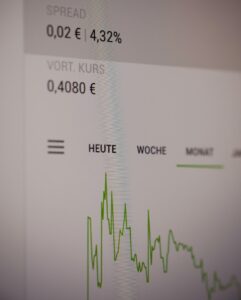MACD vs RSI: Which Indicator is the Best for Forex Trading?
When it comes to forex trading, technical analysis plays a crucial role in making informed trading decisions. Traders rely on various indicators to identify potential trading opportunities and determine the best entry and exit points. Two popular indicators that forex traders often use are the Moving Average Convergence Divergence (MACD) and the Relative Strength Index (RSI). While both indicators serve different purposes, traders often find themselves wondering which one is the best for forex trading. In this article, we will compare and analyze the MACD and RSI indicators to help you make an informed decision.
The MACD indicator is a trend-following momentum indicator that consists of two lines: the MACD line and the signal line. It helps traders identify potential trend reversals, as well as the strength of the current trend. The MACD line represents the difference between two moving averages, usually the 12-day and 26-day exponential moving averages (EMA). The signal line, on the other hand, is a 9-day EMA of the MACD line.
The RSI indicator, on the other hand, is a momentum oscillator that measures the speed and change of price movements. It oscillates between 0 and 100 and is calculated based on the average gains and losses over a specified period. When the RSI is above 70, it is considered overbought, and when it is below 30, it is considered oversold. Traders often use these levels to identify potential trend reversals.
To determine which indicator is the best for forex trading, we need to consider their strengths and weaknesses. The MACD indicator is particularly useful in identifying trend reversals and measuring the strength of the current trend. When the MACD line crosses above the signal line, it generates a bullish signal, indicating that it may be a good time to buy. Conversely, when the MACD line crosses below the signal line, it generates a bearish signal, indicating that it may be a good time to sell.
The RSI indicator, on the other hand, is useful in identifying potential overbought and oversold conditions. When the RSI is above 70, it suggests that the market is overbought, and a reversal may occur soon. Conversely, when the RSI is below 30, it suggests that the market is oversold, and a reversal may occur soon. Traders can use these levels to time their entries and exits, especially in range-bound markets.
While both indicators have their strengths, it is important to note that no indicator is perfect. Traders should not solely rely on one indicator but should instead use them in conjunction with other technical analysis tools and indicators. The MACD and RSI indicators can be used together to confirm trading signals and increase the probability of success.
For example, if the MACD generates a bullish signal, indicating a potential buying opportunity, traders can look for confirmation from the RSI. If the RSI is also above 30, suggesting that the market is not oversold, it provides additional confidence in the bullish signal. Conversely, if the MACD generates a bearish signal, indicating a potential selling opportunity, traders can look for confirmation from the RSI. If the RSI is also below 70, suggesting that the market is not overbought, it provides additional confidence in the bearish signal.
In conclusion, both the MACD and RSI indicators have their strengths and can be valuable tools for forex traders. The MACD is useful in identifying trend reversals and measuring the strength of the current trend, while the RSI is useful in identifying potential overbought and oversold conditions. However, it is important to remember that no indicator is foolproof, and traders should use them in conjunction with other tools and indicators. By combining the MACD and RSI indicators, traders can increase the probability of success and make more informed trading decisions.





